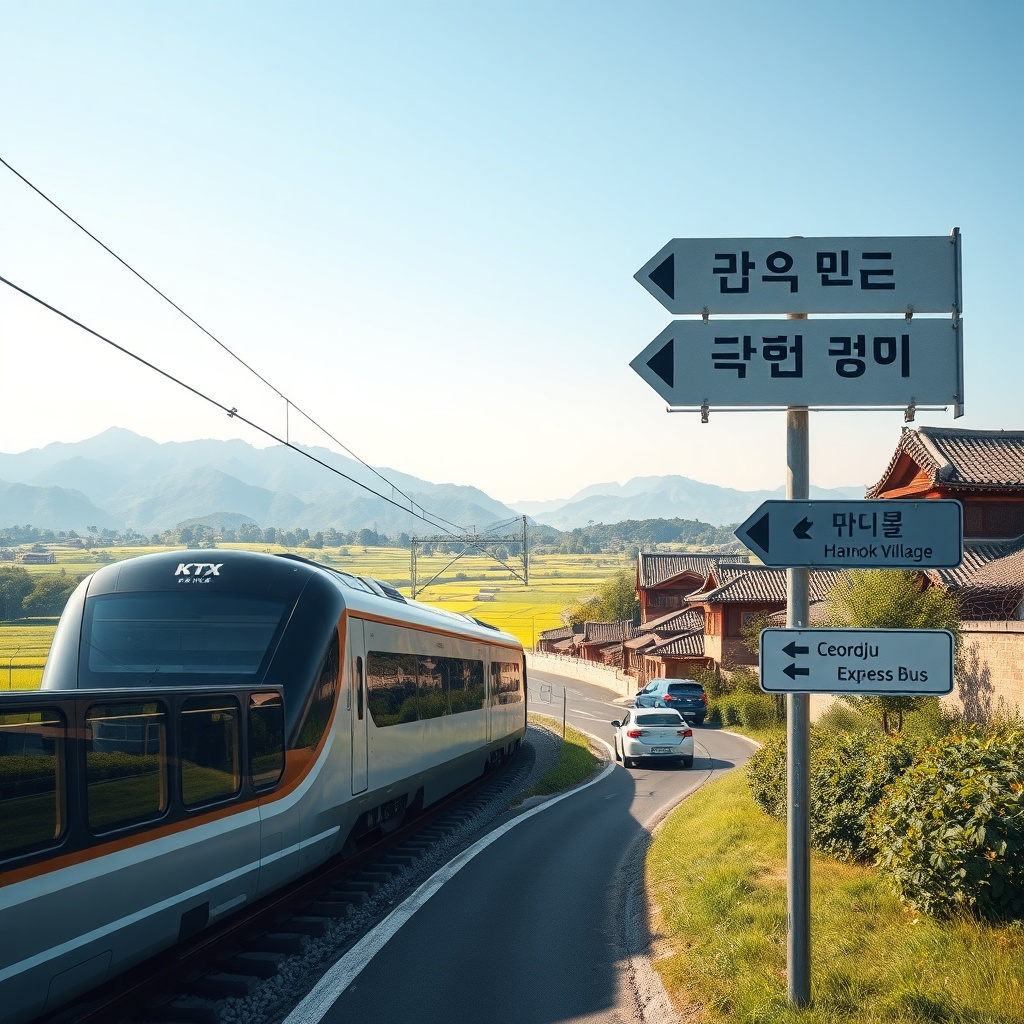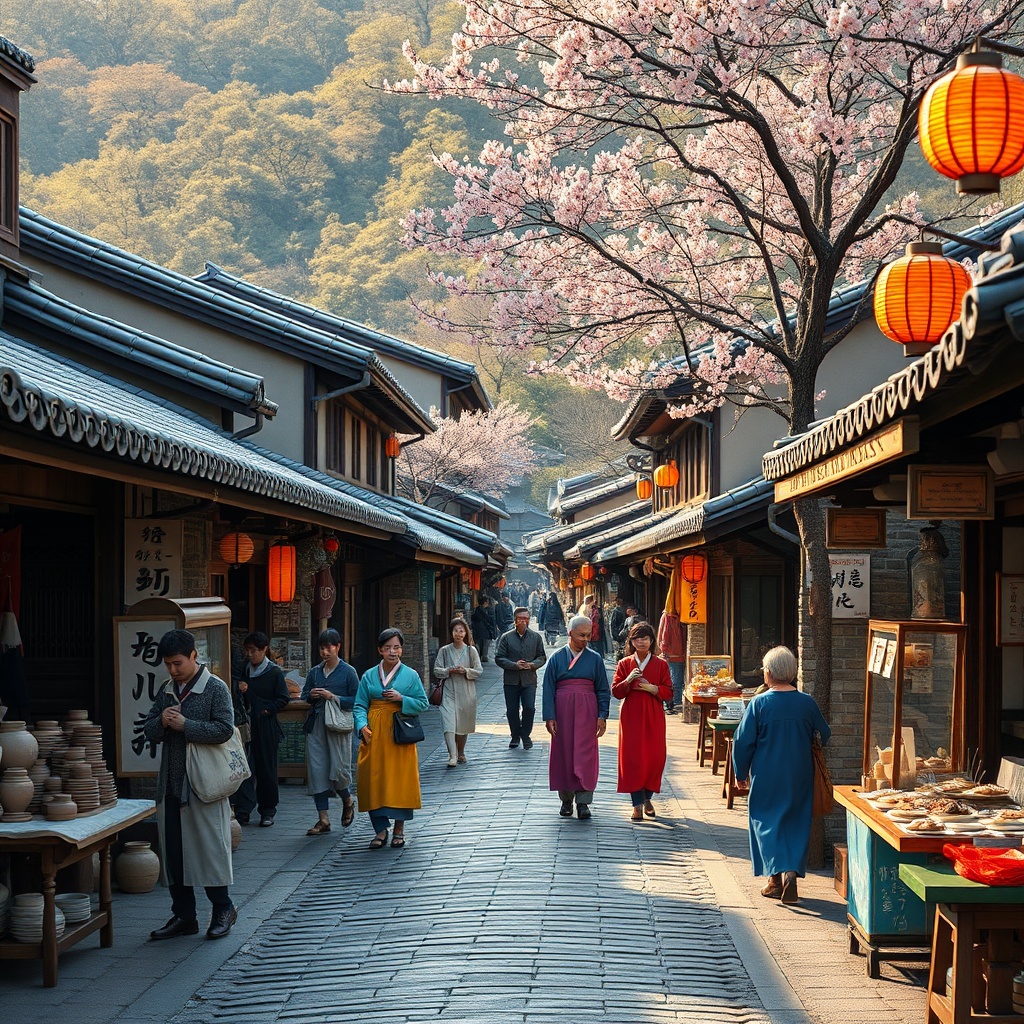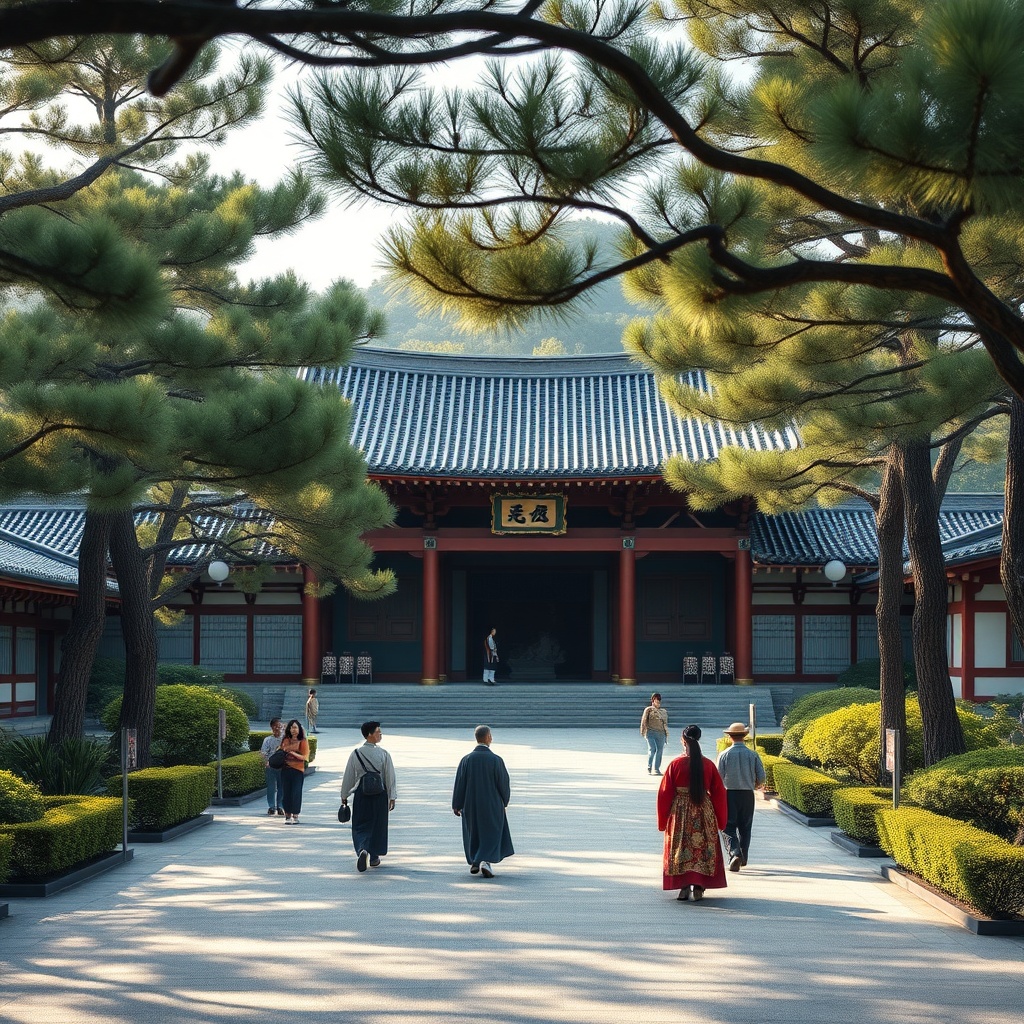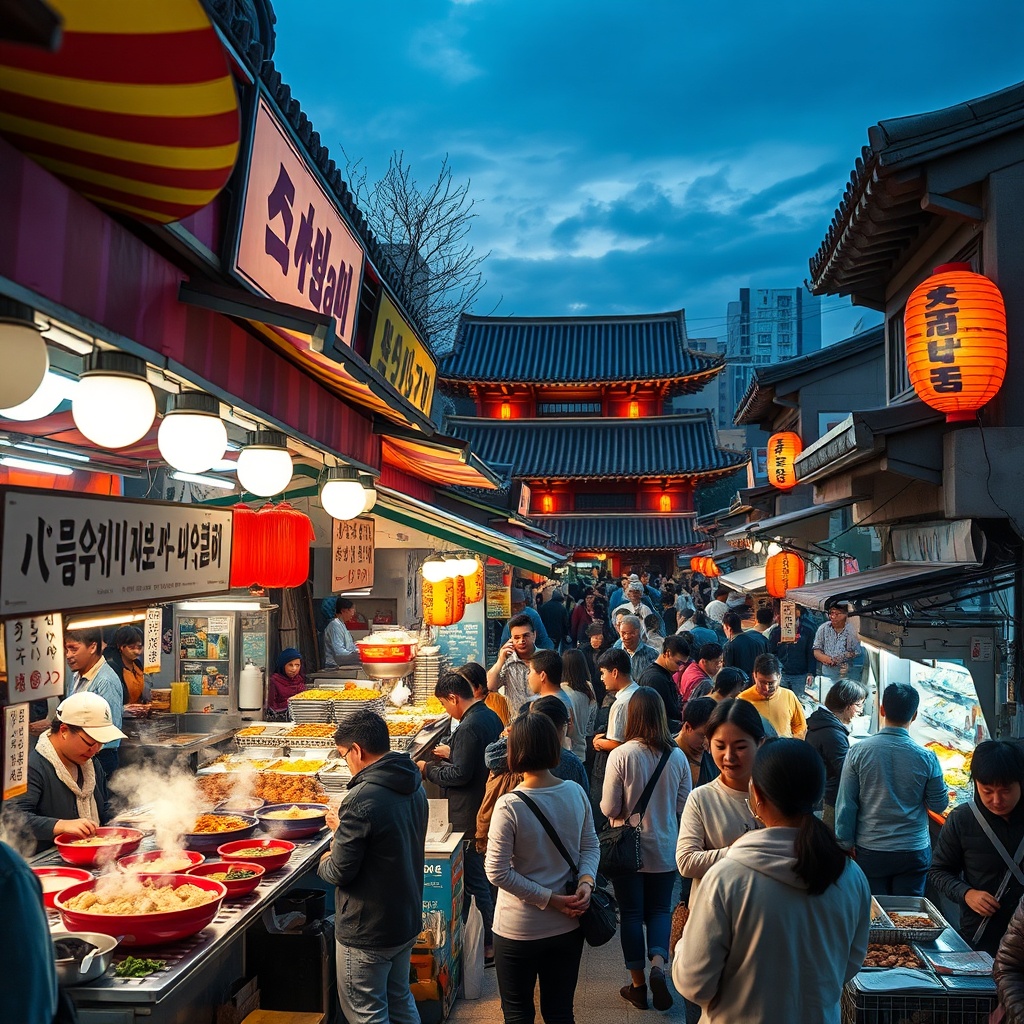Discover the Charming Jeonju Hanok Village
- 공유 링크 만들기
- X
- 이메일
- 기타 앱
Welcome to Korea's Living Museum – Jeonju Hanok Village
Are you hungry for an experience that blends tradition, taste, and truly unforgettable beauty? Jeonju Hanok Village, with over 700 traditional Korean hanok houses, is not just a destination—it's a journey back in time and a living masterpiece in the heart of the modern world! Whether you’re a fan of historic architecture, Korean street food, or vibrant local culture, Jeonju allows you to walk, taste, and live like a local for a day. Let’s embark on a story-filled day trip with precise schedules, gorgeous stops, and smart insider tips—made for travelers who want something authentic and beautiful. This guide will make your Jeonju tour truly enchanting!

Setting out for Jeonju Hanok Village is more than just a trip—it’s the beginning of a story. According to Dan Harmon's 8-stage story structure, every adventure starts with a call to the unknown, and your journey to Jeonju is no exception.
1. The Ordinary World: Imagine your daily routine, filled with city sounds and busy schedules. Now, picture breaking free from that routine and heading towards the tranquil charm of Jeonju, a city where tradition meets beauty.
2. The Call to Adventure: Maybe you’ve seen photos of hanok rooftops or heard about Jeonju’s famous bibimbap. The allure of heritage travel and the promise of new experiences beckon you to explore this cultural gem.
3. Refusal of the Call: Sometimes, planning a trip feels overwhelming. How do you get there? What’s the best route? Don’t worry—this guide will make your journey seamless and enjoyable.
4. Meeting the Mentor: Consider this blog your travel mentor. With practical tips and insights, you’ll feel confident navigating from Seoul or other cities to Jeonju Hanok Village, whether by KTX train, express bus, or car.
- By KTX Train: The fastest and most comfortable way. Board the KTX from Seoul Station to Jeonju Station (about 1.5–2 hours). From Jeonju Station, local buses or taxis will take you directly to the Hanok Village in 15–20 minutes.
- By Express Bus: Buses depart frequently from Seoul’s Express Bus Terminal. The ride takes about 3 hours, and Jeonju Bus Terminal is just a short taxi or bus ride from the village.
- By Car: Driving offers flexibility and the chance to enjoy Korea’s scenic countryside. The journey from Seoul is around 3 hours, with rest stops and beautiful views along the way.
5. Crossing the Threshold: As you leave the city behind, the landscape transforms. Rolling hills, rice paddies, and distant mountains signal that you’re approaching somewhere special. The anticipation builds, and you realize this journey is as rewarding as the destination itself.
6. Tests, Allies, and Enemies: Navigating transfers, reading bus schedules, or choosing the right route can be small challenges. But each step is part of the adventure. Fellow travelers, friendly locals, and clear signage in Jeonju make the journey smoother than you might expect.
7. The Approach: As you near Jeonju Hanok Village, you’ll notice the change in architecture—traditional hanok houses with elegant tiled roofs and wooden beams. The air feels different, and the pace of life slows down.
8. The Reward: Arriving at Jeonju Hanok Village, you’re greeted by picturesque alleys, artisan shops, and the aroma of local delicacies. You’ve made it! The journey itself has prepared you to fully appreciate the charm and history of this unique place.
| Transportation | Duration | Tips |
|---|---|---|
| KTX Train | 1.5–2 hours | Book tickets in advance, especially on weekends |
| Express Bus | 3 hours | Frequent departures, comfortable seats |
| Car | 3 hours | Great for families or groups, enjoy scenic stops |
Whether you choose the speed of the KTX, the convenience of the bus, or the freedom of a road trip, the journey to Jeonju Hanok Village is part of the experience. Each route offers its own scenic rewards and stories to tell.
Travel Tip: Try to arrive early in the day to make the most of your visit. The village is especially beautiful in the morning light, and you’ll have more time to explore its cultural heritage and hidden gems.
Remember, every great adventure starts with a single step. Your journey to Jeonju Hanok Village is not just about reaching a destination—it’s about embracing the scenic road, the anticipation, and the joy of discovery along the way.

Imagine stepping into a world where the past and present blend seamlessly—this is the magic of Jeonju Hanok Village. Nestled in the heart of Jeonju, this enchanting village is home to over 700 traditional Korean hanok houses, offering a rare glimpse into Korea's rich cultural heritage.
Walking through the narrow, winding alleys, you’ll be greeted by the gentle curves of tiled roofs, wooden beams, and stone walls. Each hanok tells a story, echoing centuries of tradition and craftsmanship. The village isn’t just a preserved relic; it’s a living, breathing community where locals still reside, run tea houses, and practice age-old crafts.
- Authentic Hanok Experience: Stay overnight in a hanok guesthouse and experience the unique charm of ondol (traditional floor heating) and sliding paper doors.
- Cultural Immersion: Participate in hands-on workshops—try your hand at calligraphy, hanji (traditional paper) making, or even don a colorful hanbok for a stroll.
- Local Flavors: Jeonju is renowned for its bibimbap, and the village is dotted with restaurants and street food stalls where you can savor this iconic dish.
- Festivals and Performances: Time your visit with one of the village’s many festivals, where you can enjoy traditional music, dance, and lantern-lit evenings.
Jeonju Hanok Village isn’t just about sightseeing—it’s about connecting with tradition. Take a moment to slow down and observe the harmony between architecture and nature. Notice how the hanok houses are built to face south, maximizing sunlight and airflow, reflecting the wisdom of ancient Korean design.
Engage with local artisans. Whether it’s a potter shaping clay or a calligrapher crafting graceful characters, their passion is infectious. These encounters offer more than souvenirs—they offer stories and memories to cherish.
- Visit early in the morning or late afternoon to avoid crowds and enjoy the tranquil atmosphere.
- Respect the residents’ privacy—many hanoks are private homes.
- Bring comfortable shoes for exploring the cobblestone paths.
- Try a tea ceremony for a peaceful, meditative experience.
- The Setup: You arrive at Jeonju Hanok Village, curious and eager to explore.
- Need: You seek a deeper connection to Korean culture, beyond the surface.
- Go: You step into the alleys, drawn by the scent of traditional foods and the sound of distant music.
- Search: You join a hanji-making workshop, feeling awkward but excited as you learn from a master artisan.
- Find: Your hands, clumsy at first, begin to understand the rhythm of the craft. You create your own piece of hanji, imperfect but meaningful.
- Take: Inspired, you don a hanbok and wander the village, seeing it through new eyes—feeling both visitor and participant.
- Return: As the sun sets, you share tea with a local, exchanging stories and laughter.
- Change: You leave Jeonju Hanok Village not just with photos, but with a renewed appreciation for tradition, community, and the beauty of slowing down.
Whether you’re a culture enthusiast, a foodie, or a traveler seeking authentic experiences, Jeonju Hanok Village offers something truly special. Let its timeless charm inspire you to embrace tradition in your own life, wherever you are.

Every journey to Jeonju Hanok Village finds its true beginning at the majestic Gyeonggijeon Shrine. Nestled at the heart of the village, this sacred site is not just a historical monument, but a living symbol of Korea’s royal legacy and cultural pride.
Let’s explore Gyeonggijeon Shrine through the lens of the classic storytelling arc, following Dan Harmon’s 8-stage structure, to discover why it’s the beating royal heart of Jeonju.
- The Ordinary World: Imagine strolling through the lively alleys of Jeonju Hanok Village, surrounded by traditional hanok roofs and the aroma of street food. Suddenly, the bustling energy quiets as you approach the tranquil grounds of Gyeonggijeon Shrine.
- The Call to Adventure: The imposing wooden gate and towering walls invite you to step inside. You’re drawn by curiosity and a sense of reverence, eager to uncover the secrets of this ancient place.
- Refusal of the Call: For a moment, you hesitate. Is this just another old building? Will you truly connect with its history?
- Meeting the Mentor: A friendly local guide appears, sharing stories of King Tae-jo, the founder of the Joseon Dynasty, whose portrait is enshrined here. The guide’s passion is infectious, awakening your own sense of wonder.
- Crossing the Threshold: You pass through the main gate, leaving the modern world behind. The serene courtyards, ancient pines, and stately halls envelop you in a timeless atmosphere.
- Tests, Allies, and Enemies: As you wander, you encounter calligraphy exhibits, royal artifacts, and quiet corners for reflection. Each element tests your attention and curiosity, deepening your appreciation for Korea’s heritage.
- The Ordeal: In the main hall, you stand before the royal portrait. The weight of history is palpable. You realize the shrine is not just about the past—it’s a living reminder of values like loyalty, wisdom, and respect.
- The Reward and Return: Emerging from Gyeonggijeon, you feel changed. You carry with you a newfound respect for tradition and a sense of connection to Jeonju’s royal roots. The shrine’s tranquil energy lingers, enriching your journey through the rest of the Hanok Village.
Why is Gyeonggijeon Shrine so meaningful?
- It’s a rare place where history, culture, and nature harmoniously coexist.
- The shrine is a powerful symbol of Korean identity and royal heritage.
- Visiting here inspires reflection, mindfulness, and a deeper appreciation for the stories that shape our lives.
Whether you’re a history buff, a lover of architecture, or simply seeking a peaceful retreat, Gyeonggijeon Shrine offers something truly special. It’s a must-visit for anyone exploring Jeonju Hanok Village, and a place where the spirit of Korea’s past gently guides the present.
| Aspect | Insight | Benefit |
|---|---|---|
| Historical Significance | Home to King Tae-jo’s portrait, symbolizing the Joseon Dynasty’s foundation | Deepens understanding of Korean history |
| Cultural Experience | Authentic architecture, calligraphy, and royal artifacts | Immerses visitors in traditional Korean culture |
| Personal Growth | Encourages reflection and mindfulness | Promotes inner peace and inspiration |
Tip: Visit in the early morning or late afternoon for the most serene atmosphere and beautiful natural light—perfect for photos and quiet contemplation.
Let Gyeonggijeon Shrine be your gateway to Jeonju’s royal heart, and let its timeless spirit enrich your journey through Korea.

When you step into Nambu Market and the vibrant Food Street of Jeonju Hanok Village, you’re not just entering a place to eat—you’re embarking on a sensory journey through Korea’s culinary heritage.
Let’s explore why this spot is a must-visit for food lovers and how it can enrich your travel experience, spark new tastes, and even inspire your own cooking adventures.
Every traveler arrives in Jeonju with a sense of curiosity. The city’s reputation as Korea’s food capital precedes it, and the Nambu Market is the perfect gateway. Here, the aroma of sizzling jeon (Korean pancakes), the sight of golden-brown hotteok, and the chatter of local vendors awaken your senses.
As you stroll deeper into the market, you cross into a world where tradition and innovation blend. The Food Street is lined with stalls offering bibimbap, Jeonju’s signature dish, alongside modern twists like fusion tteokbokki and creative street snacks. Sampling these dishes is like tasting the city’s history and its youthful energy all at once.
With so many options, choosing what to try can be overwhelming. Will you go for the classic kongnamul gukbap (bean sprout soup with rice), or be tempted by the colorful mochi ice cream? This delightful dilemma is part of the adventure—each choice a new flavor, each bite a small victory for your taste buds.
Vendors at Nambu Market are more than just cooks—they’re keepers of tradition. Don’t hesitate to ask questions or watch them prepare your food. Many are happy to share stories about their recipes, ingredients, and the market’s history. This interaction transforms a simple meal into a cultural exchange, deepening your appreciation for Korean food culture.
Perhaps you’re offered a taste of makgeolli (Korean rice wine) or a spicy dish you’ve never encountered. Stepping out of your comfort zone can be daunting, but it’s often the most memorable part of the journey. Embracing the unfamiliar expands your palate and opens your mind to new experiences.
After sampling a variety of dishes, you gain a deeper understanding of Jeonju’s food scene. You realize that every meal tells a story—of family, history, and community. The reward isn’t just a satisfied stomach, but a sense of connection to the place and its people.
As you leave Nambu Market, you carry more than souvenirs. Maybe you jot down a recipe, snap photos of your favorite dishes, or simply remember the warmth of the vendors. These memories inspire you to recreate flavors at home or seek out local markets wherever you travel next.
Back home, you share your experiences with friends and family—perhaps even cooking a Jeonju-inspired meal. This act of sharing not only enriches your own life but also spreads appreciation for Korean cuisine and the vibrant community spirit of Jeonju’s markets.
- Go hungry and with an open mind—there’s always something new to try.
- Visit in the evening for the best atmosphere and variety.
- Bring cash, as some stalls may not accept cards.
- Ask vendors for recommendations—they love to share their favorites!
- 공유 링크 만들기
- X
- 이메일
- 기타 앱
